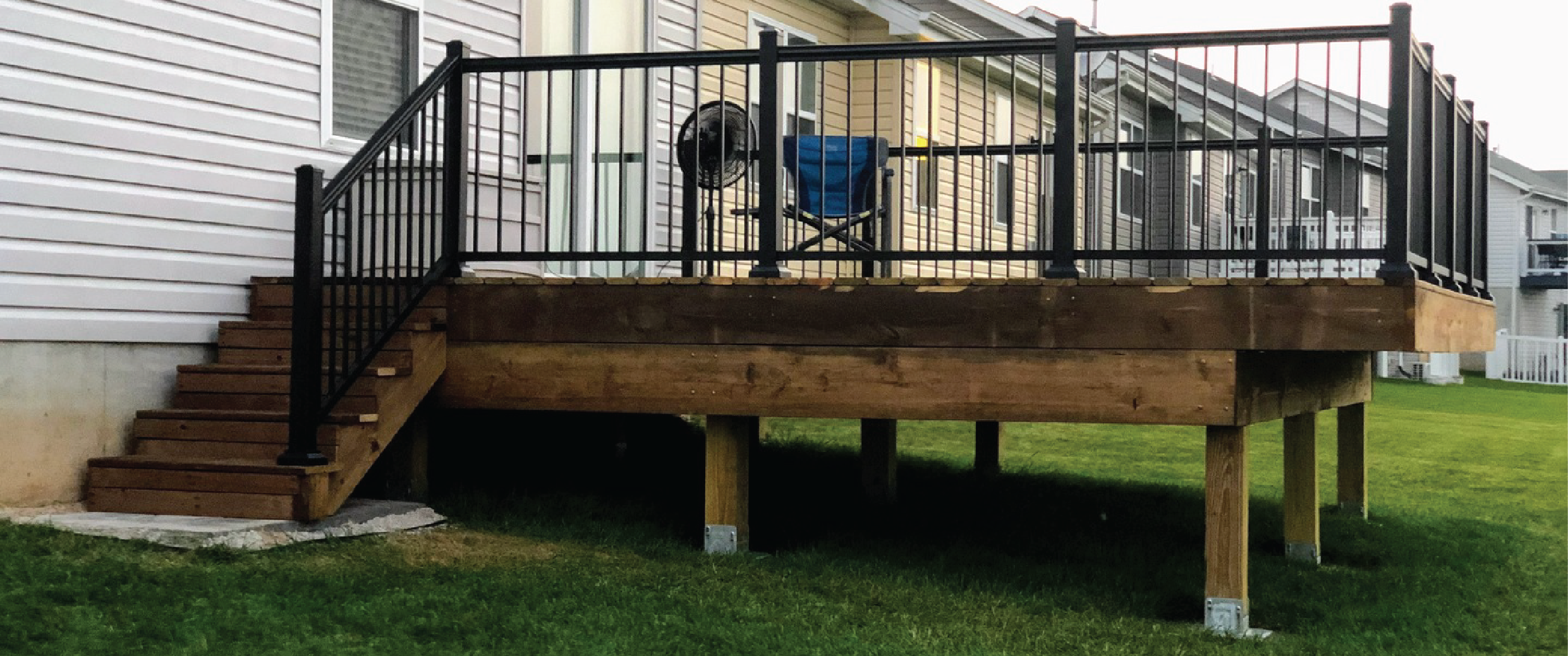Menu
Your cart is empty
Looks like you haven't added anything to your cart yet
TODAY TO JULY 5
Independence Day & Canada Day Sale
SAVE 20% ON
All Products
DISCOUNT EXPIRES IN 2 WEEKS!
LIMETED SALE! SAVE 20%!

LIMETED SALE! SAVE 20%!
Frequently Asked Questions
DECK FOOT ANCHOR

The Post Saddle can support a minimum of 19,000 lbs before destruction. However, soil conditions rarely support much more than 2000 psf. Based on common floor deck design standards of 50 psf, we recommend keeping tributary areas above each footing no more than 36 sqft when soil capacity if 1800 psf. The simple rule of thumb is 6' apart in any direction. For helical blade compression loads see the compression Chart.
The Deck Foot Anchor is commonly used for structures like pergolas, decks (6' or lower), shed platforms and walkways.
Yes, the Deck Foot Anchor has been tested in extremely cold environments. It should be used with free standing structures when in freezing soil conditions.
The footing remains securely anchored within the frozen soil and the large load plate stays firmly attached to the surface substrate during freezing and thawing conditions. It will always rest on the surface and therefore any structure supported by it would rise and fall imperceptibly with the soil expansion over the winter and spring.
It is not recommended to use the Deck Foot Anchor with ledger connected structures in climates where freezing soil conditions are common.
Longer augers provide more uplift resistance (see Uplift Chart) but because a large load plate rests on the surface the Deck Foot Anchor we still teach to use it as if it were a non-frost footing for free standing structures.
Section 403.1.3.1 exception 3 of the IRC states that “Decks not supported by a dwelling need not be provided with footings that extend below the frost line.”
Section 105.2 (10) of the IRC specifies which work is exempt from a permit. It states, “Decks not exceeding 200 ft 2 in area, that are not more than 30 inches above grade at any point, are not attached to a dwelling, and do not serve the exit door required by section R311.4.”, constitute work exempt from permit.
Use a ½” drive impact wrench (corded or 18V cordless) with a 12mm six-point hex socket.
The Deck Foot Anchor distributes compression load primarily to the surface of the soil by virtue of the large load plate. Some weight may also be carried incidentally by the helical blades but their purpose is intended to anchor the plate securely to the ground. Given the large surface area of the load plate, the entire Footing rests securely and immobile relative to the surface.
If however the surface rises during freezing conditions, the footing assembly moves in lock step relative to the incremental expansion of the soil and the subsequent thawing and contraction of the soil. It does not come out of the ground as is commonly observed with fence posts over time.
A safe Rule of Thumb is to space footings at six feet apart in any direction with maximum 2’ joist cantilevers over beams and 2’ beam cantilevers over support posts.
If a hot tub or very heavy structure is to be supported, we recommend reducing the footing spacing to less than 6’ so that the tributary load above each footing does not exceed the soil bearing capacity. This varies from soil condition to the next.
Most residential decks and structures on flat grades will only require a 24” auger. A shorter auger is also less likely to hit a rock or other obstructions. Consider a 24” auger also if your soil is very hard.
Use a 36” auger if you have sandy, or a sandy/clay mixed soil, you want more pullout resistance, or if you are installing on a slope of 10% or more.
This auger is recommended in compact sandy soil for maximum uplift resistance.
It is recommended to always install the Deck Foot Anchor on settled or undisturbed soil. However, if you installed footings in a disturbed soil zone, it may settle over the coming years. In such an event you would have to jack up the deck and shim under the posts in the saddle or replace the support post with a taller post.
The embossed elongated holes are part of the Terra Shift system designed to reduce the friction between the post and the post saddle side walls. Screw in lag screws at the lowest part of the elongated holes and stop once the screw head contacts the embossed edges. Do not over tighten the screws.
In the event of asymmetrical soil movement, it prevents a support post from separating from the beam. Such conditions are rare but could occur if moisture content in soil varies in the building site during winter freezing. The posts under greatest tension slide freely up in the saddle and then when the soil thaws, descends back to its place. This prevents the post from separating from the underside of the beam or the footing being pulled out of the soil. The Terra Shift system serves to protect the integrity of the post and beam connection.
Reverse your impact wrench and with your free hand pull up on the auger as it turns so it catches the soil.
Yes. But be sure to dig out an area of about 2’x2’ to create a flat area for the footing and always put down crushed stone (3/8” minus) to prevent erosion during rain.
The deck foot anchor kit comes with a post saddle, a load plate, and an auger. It is installed with a handheld ½" impact wrench. Use the 12mm impact socket for the auger and the 24mm impact socket for saddle installation.
- Choosing a selection results in a full page refresh.
Follow us
© 2026, DecksGo Powered by Shopify








































